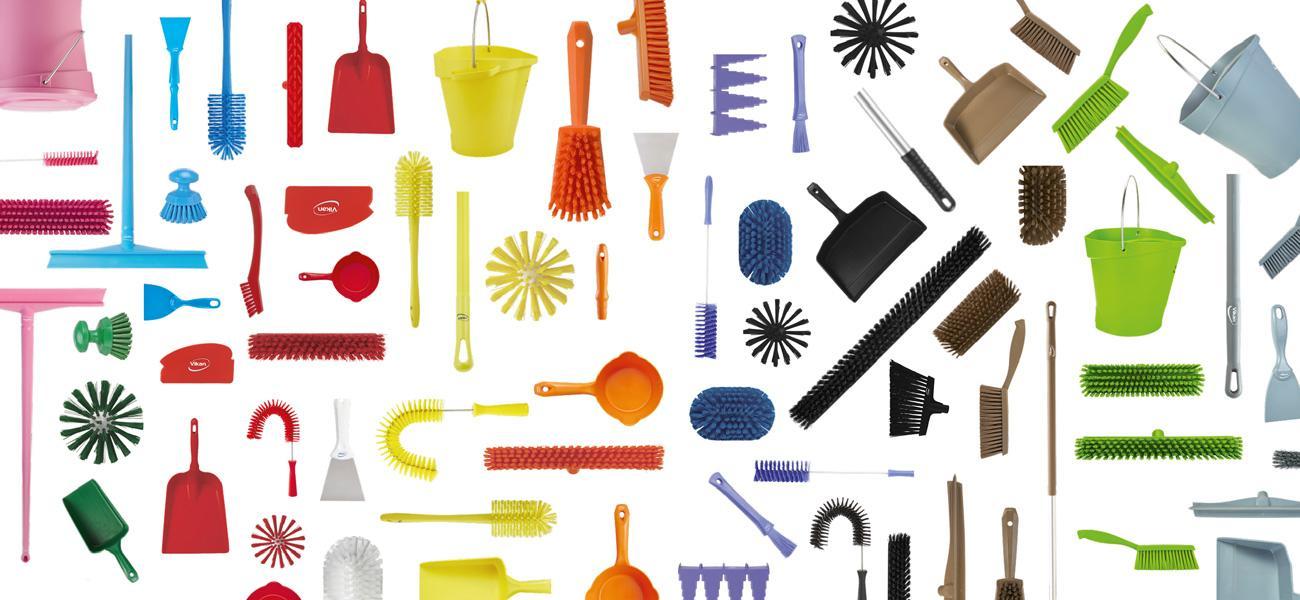
How to use colour codes to prevent cross-contamination in the food industry?
Food safety is an extremely important issue which must be taken into consideration by anyone who comes in contact with food in the course of production, preparation, transporting, or packaging the food or in any other manner. None of us would be happy to find unpleasant surprises in our dinner. Such mistakes may cause serious health problems and thereby damage the company’s reputation.
The risks which may arise as a result of cross-contamination
- Food-borne disease – according to the World Health Organization, 600 million cases of food-borne diseases occur in the world every year, of which 420,000 result in the death of the individual. Food-borne diseases are contracted by consuming food or drinks which have been contaminated by bacteria, viruses or parasites which cause diseases.
- Allergens – for an individual with a food allergy or intolerance, even a small amount of the food product which they are sensitive to may prove fatal.
- Foreign bodies – finding something that does not belong in it from your food, such as a piece of the packaging or a hair, is not only an unpleasant experience but may also cause serious health damage.
Colour codes help to prevent cross-contamination
Colour codes are designed to make sure that all employees know which cleaning tools may be used and where to use them. As there is a separate colour for each place or task, there is no confusion and no risk of one and the same tool being used for cleaning floors, tables, and dishes. This reduces the risk of cross-contamination and ensures food safety.
Four options for creating a colour-coded system
There is no one specific rule for building a colour-coded system. There is, however, a certain principle to keep in mind: Use as few colours as possible to avoid confusion and make the system easy to follow. If you would like to use colour codes efficiently at your company, think carefully which type of segregation would be the most efficient and necessary for your company.
- Area of application – pick one colour for the cleaning supplies which come in contact with food and another for the supplies which do not come in contact with food. In order to ensure food safety, it is advisable to pick a clearly contrasting colour for the supplies which come in contact with food, such as blue.
- Allergens and chemicals – in order to reduce the risk of cross-contamination, pick a separate colour for those supplies which come in contact with certain allergens. If you do not wish to take into use any new colours, coloured rubber strips may be attached to the cleaning tools.
- Processes – different stages should be kept separate in order to prevent cross-contamination. For example, colour-coding is often used in the kitchen for separating raw meat from cooked meat.
- Zones – allocate different colours for all zones. This will prevent cross-contamination and make it easy to identify any tools which are not in the right place.
Ten tips for efficient implementation of colour codes
- Use contrasting colours – this will make it easier to notice any pieces of the cleaning tools which may have broken off.
- Keep the system simple – use as few colours as possible.
- Make sure that the colours are logical – the colours selected should be easy for the employees to understand.
- Use colour combinations which are suitable for colour blind individuals – it is important to make sure that colour blind people can also differentiate the colours.
- Avoid complex colour combinations – do not use different colours for one tool (for example different colours for the handle and the broom).
- Choose colours which are appropriate for your needs – it is advisable to use standard colours (green, blue, red, white, yellow) in the zones with many different supplies and other colours (pink, orange, purple, lime, brown, black, grey) in smaller zones.
- Introduce the new colour code system to all employees - this will ensure than all will have the same understanding of how to operate.
- Support the system with labelling – use pictures or multilingual texts, for example, to make sure that all employees understand the system.
- Determine a specific time for switching the systems – in order to avoid confusion, it is advisable to switch over to using a new system fully at once, not gradually.
- Make sure that the supplies are kept in the right place
Vikan is the world’s leading producer of cleaning tools from Denmark whose tools are designed based on the colour codes and peculiarities of the food industry.
